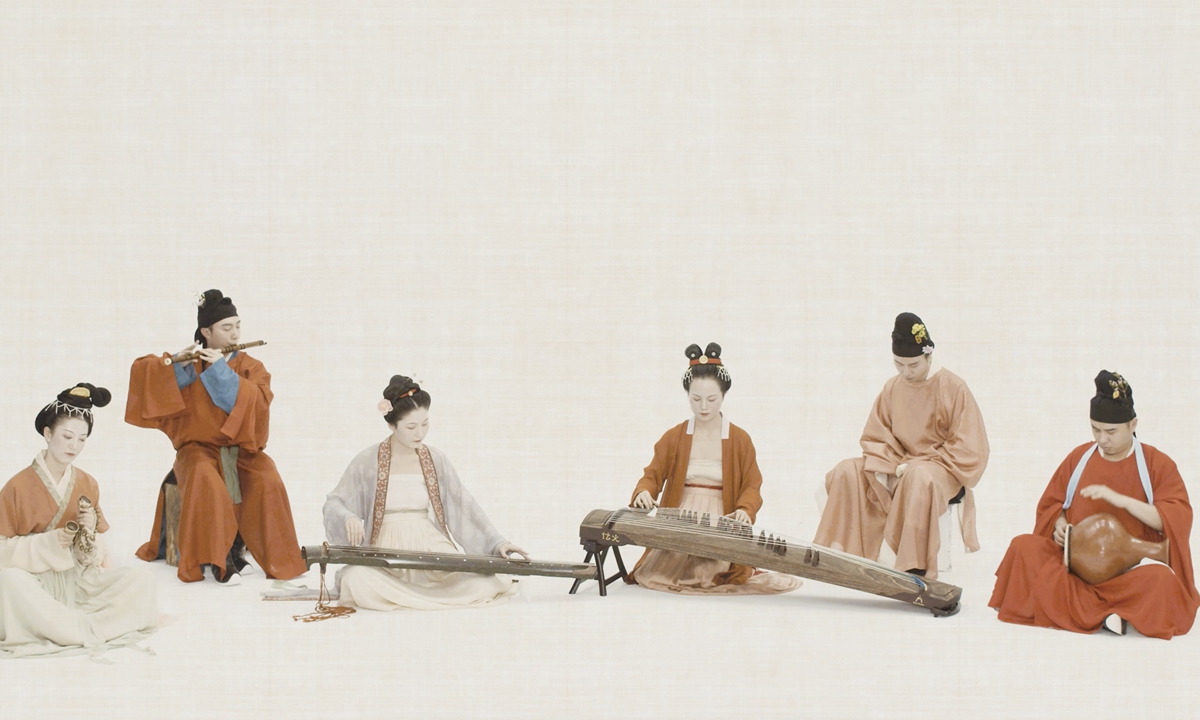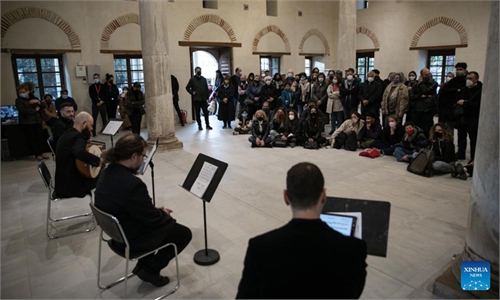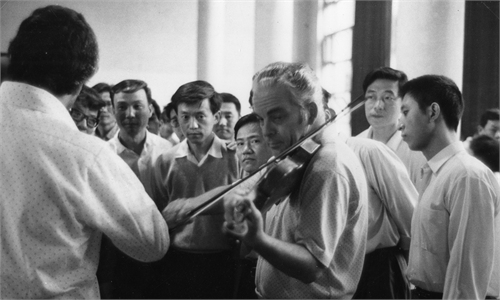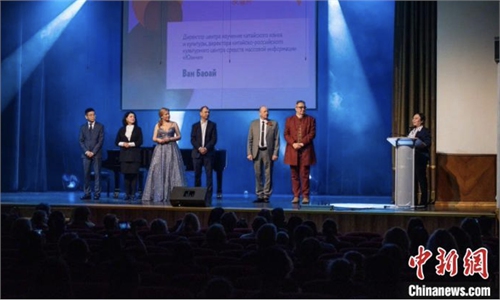ARTS / MUSIC
Young Chinese create original music inspired by ancient texts
Songs from the past

Members of the Zi De Guqin Studio play traditional Chinese instruments in one of their music videos. Photo: Courtesy of Zi De Guqin Studio
Editor's Note:Ancient books are not only treasure houses for ancient thoughts and the crystallization of the wisdom of sages, but also important carriers of the inheritance of a civilization and the collective memory of a nation. Understanding this importance, the Chinese central government recently issued a set of guidelines focusing on strengthening the preservation and publication of ancient books. As the saying goes, "the best way to keep something alive is to make it part of people's daily lives." Here, the Global Times talk with several people who are currently working to come up with innovative ways to bring China's ancient works into the lives of readers today. The four stories are: Bringing ancient books 'alive' with delicious dishes, Young Chinese create original music inspired by ancient texts, China's wooden building ingenuity still alive today and Shanghai team on mission to revive fashion found in ancient books.
"The thick strings loudly thrum like pattering rain; The fine strings softly tinkle in a murmuring strain. When mingling loud and soft notes are together played, you hear orioles warble in a flowery land, then a sobbing stream running along a beach of sand."
These lines from a Tang Dynasty (618-907) poem by the famous Bai Juyi describe a musician playing pipa, a four-stringed Chinese lute.
Such lines about musical instruments and traditional music found among ancient texts are not just gathering dust in the corner that is history, rather they are being kept alive today through the endeavors of young Chinese.
A group of young Chinese are trying to breathe new life into ancient texts about traditional music by creating original music and stylish music videos featuring traditional instruments.
Zi De Guqin Studio, made up of dozens of Chinese in their 20s and 30s, has recently gone viral with stylish music videos in which all the songs are played using traditional instruments. They all feature the musicians dressed in attire appropriate to the time of the piece and instruments.
Members of the studio told the Global Times that their main references are ancient books and historical records surrounding traditional music.
"These ancient texts depict the musical activities of our ancestors. They all have a vivid life and continuously provide energy for the inheritance and innovation of our music."
Ancient treasures
Guqin, a plucked seven-stringed instrument whose origins date back to thousands of years ago, is one of the most frequently appearing instruments in these videos.
This instrument has been recorded in a wealth of books and materials over the centuries, with more than 3,000 guqin songs preserved in ancient texts, according to Qianxue, a member of the studio. The earliest extant guqin music can be traced back to the Tang Dynasty.
The techniques to play guqin music can be found in these ancient texts. Some books on guqin such as Shenqi Mipu (lit: Marvelous Secret Music Score) from the Ming Dynasty (1368-1644) and Wuzhizhai Qinpu (lit: Wuzhizhai Music Score) from the Qing Dynasty (1644-1911) not only collect ancient guqin songs, but also record theories and methods of playing guqin. "We all referred to some ancient songs to varying degrees while creating our original works," Qianxue said.
"Nichang Jingmeng," one of the most popular works, combines traditional Chinese music with Western orchestra. They recorded the song with the cooperation of the Budapest Scoring Orchestra.
The song is an adaptation of the song written by Jiang Kui during the Song Dynasty (960-1279). The first and last sections of the piece are taken from Jiang's original music. They also incorporated a special kind of pipa from the Tang Dynasty. Its elegant appearance and simple tone can add more colors of the dynasty to the audio and the video.
Innovation is key
The studio's adaptations of ancient songs have grown popular among young people in China. According to the studio's members, their success comes down to two main factors: the recent rise in popularity of traditional Chinese culture and their own innovation. Traditional culture has been making an obvious revival as more young people have a stronger sense of national identity.
"When creating music, we imagine what this ancient music must have sounded like and incorporate modern adaptations. We also incorporate some fun and interesting elements and strive to give these works a great aesthetic appeal in terms of visual effects when making videos," Qianxue said.
Previously, the studio wrote the theme song "Chang'an Fantasy: Ghost Patrol of Ancient China" for an online game. In a music video for the game's theme song, the performers look like they could step right out of a Tang Dynasty painting.




